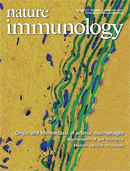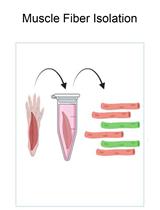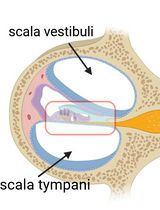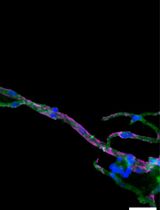- EN - English
- CN - 中文
Vaginal HSV-2 Infection and Tissue Analysis
阴道HSV-2感染和组织分析
发布: 2017年07月05日第7卷第13期 DOI: 10.21769/BioProtoc.2383 浏览次数: 10508
评审: Anonymous reviewer(s)
Abstract
The vaginal murine HSV-2 infection model is very useful in studying mucosal immunity against HSV-2 (Overall et al., 1975; Renis et al., 1976; Parr and Parr, 2003). Histologically, the vagina of Depo-Provera-treated mice is lined by a single layer of mucus secreting columnar epithelial cells overlying two to three layers of proliferative cells. Even though this is morphologically different from the human vagina, it closely resembles the endocervical epithelium, which is thought to be the primary site of HSV-2 infection in women (Parr et al., 1994; Kaushic et al., 2011). In the protocol presented here, mice are pre-treated with Depo-Provera before intra-vaginal inoculation with HSV-2. The virus replicates in the mucosal epithelium from where it spreads to and replicates in the CNS including the spinal cord, brain stem, cerebrum and cerebellum. Cytokine responses can be detected in vaginal washings using ELISA or in vaginal tissues using qPCR. Further, the recruitment of leukocytes to the vagina can be determined by flow cytometry. The model is suitable for research of both innate and adaptive immunity to HSV-2 infection.
Keywords: Immunology (免疫学)Background
Vaginal infection with HSV-2 has been studied in various animal models, such as rabbits, hamsters, guinea pigs, mice and monkeys with viral replication at the peripheral site and retrograde transport of virus to the neurons (Nahmias et al., 1971; Overall et al., 1975; Renis, 1977; Stanberry et al., 1982; Roizman et al., 2013). There are several pros and cons regarding the different animal models in terms of susceptibility to infection, latency, spontaneous reactivation of HSV-2 and availability of animals, especially with regard to the accessibility of knockout animals, which have been very useful in studies of immune responses to infection. The vaginal epithelium in the genital tract undergoes significant hormonal changes during the menstrual cycles, and both susceptibility to HSV-2 and the nature of the induced immune responses are regulated and affected by sex hormones (Kaushic et al., 2011). Mice are more susceptible to vaginal HSV-2 infection during pregnancy and during the diestrus stage of the murine estrus cycle, when progesterone levels are the highest (Overall et al., 1975; Baker and Plotkin, 1978; Gallichan and Rosenthal, 1996). Pre-treatment of mice with Depo-Provera, a long-lasting commercial progesterone induces the diestrus stage and increases susceptibility to vaginal HSV-2 infection by 100-fold (Parr et al., 1994; Kaushic et al., 2003).
During the progression of intra-vaginal (i.vag.) HSV-2 infection in mice, the virus initially infects the vaginal epithelial cells in patches that involve the full thickness of the epithelium layer, and the underlying stroma is usually free of infection. The infected epithelial cells are shed off into the vaginal lumen (apical side) and infect the rest of the epithelium. The virus can spread horizontally within the epithelial layers to the epidermis and hair follicles, which results in loss of hair and development of skin lesions (Parr and Parr, 2003; Zhao et al., 2003). Vaginal HSV-2 infection and the resulting replication of the virus seem to be restricted to the vaginal epithelium, with no spread via viremia, as the virus generally cannot be isolated from systemic organs, blood or lymph nodes upon genital HSV infection (Overall et al., 1975; Renis et al., 1976; Podlech et al., 1996; Zhao et al., 2003). HSV-2 reaches dorsal root ganglia (DRG) via sensory neurons that innervate the site of infection, and from there the virus can spread further to the lumbar part of the spinal cord, brain stem and finally the brain (Renis et al., 1976; Georgsson et al., 1987; Podlech et al., 1996; Parr and Parr, 2003). HSV-2 can also spread to parasympathetic neurons via Para-cervical ganglia (major autonomic ganglia) of the bladder and rectum, which can cause retention of urine and feces (Parr and Parr, 2003).
Materials and Reagents
Note: All of the items mentioned in section “Materials and Reagents” can be ordered from any qualified company.
- Pipette tips
- Tissue culture plates (58 x 15 mm) (Thermo Fisher Scientific)
- Super Frost+ slides (Thermo Fisher Scientific)
- TC flask T25 (SARSTEDT)
- 70 µm pore size mesh (BD Falcon)
- 40 µm pore size mesh (BD Falcon)
- 96-well flat bottom plates (NUNC)
- 96-well round bottom plates (NUNC)
- Safety lock Eppendorf tubes
- Stainless steel beads, 5 mm (QIAGEN)
- Tissue processing/embedding cassettes (Sigma-Aldrich)
- Scalpels (Swann Morton)
- Flow-count beads (Beckman Coulter)
- Vero cells
- L929 cells
- Mouse strain: C57BL/6 mice
Notes:- The genetic background of different mouse strains can influence studies and it has been observed that different mouse strains, C57BL/6, BALB/c, SJL/J, PL/J and A/J have different susceptibilities to HSV. C57BL/6 and BALB/c mice are moderately susceptible to HSV, whereas A/J, PL/J and SJL/J mice strains are highly susceptible (Lopez, 1975; Kastrukoff et al., 2012). It has also been observed that 129Sv background mice produce higher amounts of type I and type III IFN compared to C57BL/6 in response to genital HSV-2 infection, nevertheless no difference in viral titer is observed in the vagina after HSV-2 infection (Ank, 2008).
- The vaginal HSV-2 infection model is based on pre-treatment with depo-provera. The pre-treatment with progesterone is an artificial intervention but is required for a reproducible enhanced susceptibility to HSV-2 infection in C57BL/6 mice.
- The genetic background of different mouse strains can influence studies and it has been observed that different mouse strains, C57BL/6, BALB/c, SJL/J, PL/J and A/J have different susceptibilities to HSV. C57BL/6 and BALB/c mice are moderately susceptible to HSV, whereas A/J, PL/J and SJL/J mice strains are highly susceptible (Lopez, 1975; Kastrukoff et al., 2012). It has also been observed that 129Sv background mice produce higher amounts of type I and type III IFN compared to C57BL/6 in response to genital HSV-2 infection, nevertheless no difference in viral titer is observed in the vagina after HSV-2 infection (Ank, 2008).
- Virus strain: HSV-2 333 strain (laboratory isolate, Stanberry et al., 1982)
- Vesicular stomatitis virus (VSV/V10) (Indiana Strain) (ATCC, catalog number: VR-158 )
- Phosphate buffered saline solution (PBS) (Sigma-Aldrich)
- Depo-Provera (Pfizer)
- Isoflourane (Piramal Critical Care)
- DMEM (with no supplement of antibiotics or FSC) (Lonza)
- Penicillin-streptomycin (Thermo Fisher Scientific)
- Fetal calf serum (FCS) (In Vitro Technologies)
- 0.2% human immunoglobulin (ZLB Behring)
- 0.03% methylene blue (Sigma-Aldrich)
- 2% formaldehyde (Sigma-Aldrich)
- Ethanol (Sigma-Aldrich)
- Xylene (Sigma-Aldrich)
- Methanol (Sigma-Aldrich)
- 0.5% hydrogen peroxide (H2O2) (Sigma-Aldrich)
- 10 mM Tris
- 0.5 mM EGTA (pH 9.0)
- 50 mM NH4Cl
- Polyclonal rabbit anti-HSV-2 (Agilent Technologies, Dako, catalog number: GA521 ) (1:100)
- HRP-conjugated secondary antibody (Agilent Technologies, Dako, catalog number: P044801-2 ) (1:200)
- 3,3’-diaminobenzidine (Kem-En-Tec)
- Mayer’s or Harris’s hematoxylin solution (Sigma-Aldrich)
- Eukitt reagent (Eukitt, O. Kindler)
- Collagenase/dispase (1 mg/ml) (Roche Diagnostics)
- DNase 1 (2 mg/ml) (Roche Diagnostics)
- Ethylenediaminetetraacetate acid disodium salt (EDTA) (0.02%)
- Anti-mouse CD16/CD32 Ab (eBioscience)
- IgG, 1 g/ml (Jackson ImmunoResearch)
- Anti-mouse antibodies (BD Pharmingen):
- CD45-APC (clone 30-F11)
- NK1.1-FITC (clone PK136)
- Nk1.1-PE (clone PK136)
- CD11b-PE (clone M1/70)
- Ly-6g-APC (clone 1A8)
- APC RAT IgG2b, κ Isotype
- FITC RAT IgG2a, κ Isotype
- PE RAT IgG2a, κ Isotype
- 7-AAD (Live/dead cell marker)
- CD45-APC (clone 30-F11)
- TRIzol (Invitrogen)
- DEPC water
- Chloroform (Sigma-Aldrich)
- Isopropanol
- Invitrogen Ambion DNA free kit
- Bovine serum albumin (BSA) (Sigma-Aldrich)
- 0.05% saponin (Thermo Fisher Scientific)
- 0.2% gelatin (Thermo Fisher Scientific)
- 0.3% Triton X-100 (Thermo Fisher Scientific)
- ELISA kits (R&D Systems)
- RNase free water (Roche Diagnostics)
- Oligo (dT) (Roche Diagnostics)
- Expand reverse transcriptase (Roche Diagnostics)
- Buffer A (see Recipes)
- Buffer B (see Recipes)
- Buffer C (see Recipes)
- FACS buffer (see Recipes)
Equipment
- Pipettes
- 8 arm multipipette
- Microtome (Leica)
- Microwave oven
- Rocking platform
- Humidity chamber
- Mortar/pestle
- Centrifuge
- UV-light
- Light microscopy
- Homogenizer/shaker
- Incubator
- qPCR platform of choice
- NanoDrop
- Flow cytometer
Procedure
文章信息
版权信息
© 2017 The Authors; exclusive licensee Bio-protocol LLC.
如何引用
Iversen, M. B., Paludan, S. R. and Holm, C. K. (2017). Vaginal HSV-2 Infection and Tissue Analysis. Bio-protocol 7(13): e2383. DOI: 10.21769/BioProtoc.2383.
分类
免疫学 > 粘膜免疫学 > 泌尿生殖道 > 细胞分离
微生物学 > 体内实验模型 > 病毒
细胞生物学 > 组织分析 > 组织分离
您对这篇实验方法有问题吗?
在此处发布您的问题,我们将邀请本文作者来回答。同时,我们会将您的问题发布到Bio-protocol Exchange,以便寻求社区成员的帮助。
Share
Bluesky
X
Copy link













